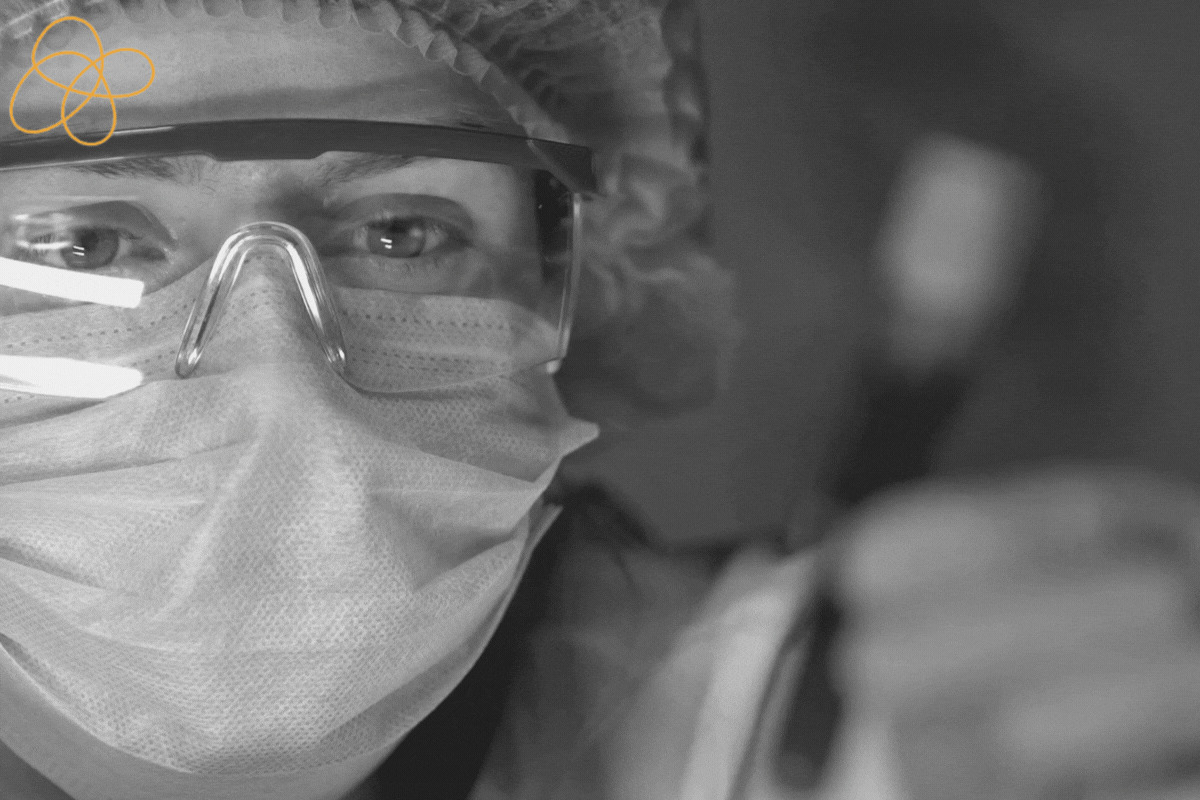Addressing Extractables and Leachables in Drug Development: A Small Biotech Guide
The dynamic and constantly evolving landscape of drug development poses significant challenges, especially for small biotech companies. One such challenge is managing the potential impact of extractables and leachables (E&L). These compounds, which can migrate from pharmaceutical packaging and manufacturing systems into the drug product, can pose safety risks to patients and, consequently, can become significant regulatory hurdles.
Understanding Extractables and Leachables
Extractables are compounds that can be extracted from a drug’s packaging or manufacturing process equipment under aggressive conditions. Conversely, leachables are compounds that migrate into the drug product under normal conditions of storage and use.
Extractables and leachables can originate from various sources, such as the components of primary and secondary packaging, stoppers, caps, and even single-use systems (SUS) employed in manufacturing. Materials such as rubber, glass, plastic, and metal are potential sources of E&L, with plastic polymers being the most common culprits due to additives like antioxidants, plasticizers, and stabilizers.
Extractables and leachables (E&L) become a concern when they pose potential safety risks to patients. Here are several situations where E&L could be a significant concern:
- Patient Safety: E&L can potentially cause toxicological effects, ranging from irritation and hypersensitivity to systemic toxicity and carcinogenicity. The concern increases with drugs intended for chronic use, given the prolonged exposure to leachables.
- Product Efficacy: Some leachables may interact with the active pharmaceutical ingredient (API), potentially impacting the efficacy of the drug. They might lead to the degradation of the API or alter the drug’s pharmacokinetics.
- Product Quality: E&L can affect the physical and chemical properties of the drug product. This could manifest as changes in color, precipitation of solid particles, or changes in pH, all of which could alter the product’s quality attributes.
- Regulatory Compliance: Regulatory agencies have heightened their focus on E&L, and inadequate E&L risk assessment can lead to regulatory challenges. This can result in delayed approvals or even rejection of marketing applications.
Given these concerns, it’s important to consider E&L throughout the drug development process. A well-designed E&L testing program can help identify potential issues early, allowing time for mitigation strategies and ensuring patient safety, product quality, and regulatory compliance.
Regulatory Landscape
The regulatory landscape concerning E&L has intensified over the years. Regulatory agencies like the U.S. FDA and EMA require detailed E&L studies to assess potential safety risks. While the E&L guidelines provide a framework, they often lack specific instructions. This leaves a significant degree of interpretation and discretion to manufacturers, making it challenging for small biotechs without an established E&L program.
Importance of E&L Risk Assessment
The E&L risk assessment is crucial for ensuring patient safety, maintaining product quality, and meeting regulatory expectations. The risk assessment should consider factors like the route of administration, the dosage form, the duration of exposure, and the patient population.
Key Steps to Address E&L in Drug Development
Early Engagement
E&L considerations should begin early in the drug development process, preferably during the design and selection of the drug delivery system. This early engagement allows time for robust E&L studies and any necessary mitigation strategies.
Expanding on Key Steps to Address E&L in Drug Development
Integrating E&L considerations from the onset of the drug development process can save time, resources, and potentially, a company’s reputation. Early E&L studies allow for the identification of potential problematic compounds, enabling proactive changes to materials or processes, thereby reducing the risk of costly late-stage changes or regulatory pushbacks.
Case Study: The Ophthalmic Solution
A small biotech company developing an ophthalmic solution initiated E&L studies in the early stages of development. The studies revealed an antioxidant from the bottle’s plastic cap was leaching into the solution. Because of early identification, the company was able to modify the cap material and revalidate, avoiding potential safety issues and late-stage regulatory delays.
Choosing the Right Materials
Selecting the right materials for drug product contact surfaces is vital. Understanding the chemical composition and potential extractables from these materials can inform the risk assessment process and guide the selection of materials.
The correct selection of materials used in drug product contact surfaces is a crucial step in managing E&L risk. Thorough knowledge of the materials and their extractables profiles can guide the risk assessment and risk mitigation strategies.
Case Study: The Inhalation Drug
A company developing an inhalation drug chose a specific plastic for the device based on its low extractables profile. However, the drug formulation contained a solvent that extracted an unforeseen compound from the device. The issue was identified during routine E&L testing, prompting a change in the device material. This case underscores the importance of understanding not just the extractables profile of materials but also the potential interaction with the specific drug formulation.
Implementing E&L Testing
Robust E&L testing should be an integral part of your drug development program. This involves simulated studies to identify extractables, followed by actual leachables studies on stored drug products. A comprehensive testing program should consider worst-case scenarios and use state-of-the-art analytical techniques to identify and quantify E&L.
A rigorous E&L testing program is a critical component of a comprehensive E&L strategy. This involves identifying potential extractables in simulated studies and then confirming the presence of these compounds as leachables in stored drug products. Modern analytical techniques like GC-MS, LC-MS, and ICP-MS are commonly used to identify and quantify E&L.
Case Study: The Prefilled Syringe
A company developing a biologic in a prefilled syringe performed comprehensive E&L testing. During the testing, they detected a leachable compound in the drug product at levels exceeding the safety threshold. Investigation revealed that the leachable originated from the syringe’s rubber stopper. The company was able to mitigate the issue by changing the stopper formulation, thereby reducing the leachable levels below the safety threshold.
Collaboration with Suppliers
Suppliers of packaging and process equipment can be a valuable resource for E&L information. Collaborating with suppliers can provide insights into the materials used and their potential extractables, aiding in risk assessment and testing strategy development.
Suppliers of packaging and process equipment often have extensive knowledge about their materials and potential extractables. Leveraging this information can help guide risk assessment and testing strategies.
Case Study: The Single-Use Bioreactor
A company using a single-use bioreactor for a biologic product worked closely with the bioreactor supplier to understand potential extractables from the system. The supplier provided extractables data generated under similar process conditions, which greatly informed the company’s risk assessment and E&L testing strategy.
Regulatory Consultation
Given the complexities of E&L and the discretion allowed by the regulations, early and frequent consultation with regulatory authorities can provide valuable guidance and mitigate the risk of regulatory surprises.
The challenges posed by extractables and leachables in drug development are not insurmountable. By integrating an E&L strategy into the early stages of drug development, small biotech firms can not only ensure patient safety and product quality but also streamline their path to regulatory approval. With knowledge, preparation, and collaboration, these companies can turn the challenge of E&L into an opportunity for success.
Given the complexities of E&L and the regulatory discretion, early and frequent consultation with regulatory authorities can provide valuable guidance and mitigate the risk of regulatory surprises.
Case Study: The Injectable Drug
A small biotech developing an injectable drug sought early consultation with the FDA regarding their E&L testing strategy. Based on FDA feedback, they expanded their testing to include additional solvents and modified their risk assessment approach. This early dialogue helped the company meet the FDA’s expectations, smoothing their path to approval.
The above case studies illustrate the importance of a proactive approach to E&L in drug development. By considering E&L from the beginning, selecting the right materials, implementing robust E&L testing, collaborating with suppliers, and seeking regulatory consultation, small biotech companies can effectively manage E&L risks and streamline their path to regulatory approval.
The Regulatory Guidance on Extractable and Leachables
Regulatory guidance on Extractables and Leachables (E&L) is provided by various global agencies, including the US FDA, EMA, and ISO. It’s important to note that the regulatory landscape is often nuanced and specific guidance can depend on the type of drug product (e.g., injectables, inhalation products, etc.).
- US FDA Guidance: The FDA provides several guidance documents that touch upon E&L considerations. For example, the guidance for “Container Closure Systems for Packaging Human Drugs and Biologics” includes considerations for E&L. The FDA’s guidance on “Ophthalmic Products” and “Inhalation and Nasal Drug Products” also contain detailed sections on E&L. However, the FDA does not provide a prescriptive approach, but rather emphasizes a risk-based assessment.
- EMA Guidance: The EMA also provides guidance in the area of E&L. The EMA guidelines on plastic immediate packaging materials lay out E&L requirements, including the need for a safety assessment of extractables and leachables.
- ISO Standards: ISO 10993-18:2020, “Biological evaluation of medical devices – Part 18: Chemical characterization of medical device materials within a risk management process”, outlines a framework for identifying potential extractables from medical devices, which can be applicable to drug-device combination products.
When to consider E&L in drug development? It’s recommended that E&L considerations be included from the early phases of drug development:
- Discovery/Preclinical Development: Initial screening of materials and evaluation of potential E&L risks can start in this phase.
- Phase 1/2: Detailed E&L studies should ideally be conducted before Phase 1 clinical trials. The results of these studies can inform safety assessments and can be included in Investigational New Drug (IND) applications.
- Phase 3: Confirmatory E&L studies should be conducted on the final chosen materials and the final drug product. These studies should be included in the marketing authorization application (e.g., New Drug Application (NDA) or Biologics License Application (BLA)).
By integrating E&L considerations into the drug development process from the outset, potential issues can be identified and addressed proactively, reducing the risk of late-stage development failures or regulatory challenges.
Some Questions to Discuss with FDA around Extractables and Leachables
Engaging in a dialogue with the FDA regarding Extractables and Leachables (E&L) is a crucial part of a proactive regulatory strategy. Here are some questions that you might consider discussing with the FDA:
- Study Design: What are the FDA’s expectations for the design of E&L studies? What types of extraction solvents, conditions, and analytical techniques would the FDA recommend for a specific drug product?
- Risk Assessment: How should the risk assessment be conducted? How does the FDA view the use of safety thresholds such as the Threshold of Toxicological Concern (TTC) for E&L?
- Study Timing: When does the FDA expect to see detailed E&L studies during the drug development process? For example, should preliminary studies be included in the IND, with more detailed studies to follow in the NDA/BLA?
- Drug-Specific Considerations: Are there any specific considerations for the drug product in question? For example, inhalation drugs and parenteral drugs can have different E&L considerations.
- Guidance Interpretation: How should specific FDA guidance documents be interpreted in the context of E&L? For example, guidance documents on container closure systems, ophthalmic products, or inhalation products.
- Materials Information: What level of information does the FDA expect on the materials used in the drug product contact surfaces? For example, should detailed information on the composition of materials, including additives, be included in the submission?
- Leachables Study: Does the FDA expect the leachables study to be conducted on the drug product stored under real-time, real-condition scenarios, or would accelerated storage conditions be acceptable?
- Device-Drug Combination Products: If the product is a combination product (e.g., a drug-eluting stent or an inhaler), are there additional E&L considerations?
Remember, the FDA encourages early and frequent communication, so these discussions can be part of pre-IND meetings, end of phase 2 meetings, or pre-NDA/BLA meetings. The responses to these questions will help shape your E&L strategy and ensure it aligns with FDA expectations.
Conclusion
In the high-stakes arena of drug development, addressing the challenges posed by extractables and leachables is no less than a heroic quest. These hidden adversaries, quietly migrating from materials and equipment into the drug product, can significantly impact patient safety, product quality, and the journey to regulatory approval. For small biotech firms, the path might seem daunting, filled with unknowns and potential pitfalls.
However, like any formidable adversary, extractables and leachables can be conquered with the right blend of knowledge, strategy, and perseverance. Early engagement, meticulous material selection, rigorous testing, robust collaboration with suppliers, and proactive regulatory consultation can arm companies with the tools they need to tackle these challenges.
By demystifying the world of extractables and leachables, we hope to have sparked a paradigm shift, transforming this perceived obstacle into an opportunity for excellence in drug development. As we’ve journeyed through this guide, we have not only uncovered the threats but also the strategies to mitigate them, turning potential stumbling blocks into stepping stones towards success.
So, as small biotech firms continue their valiant journey in drug development, remember: the challenge of extractables and leachables is indeed a formidable one, but armed with the right strategies, it is a challenge that can be overcome. The path is set, the tools are at hand, and the future of safer, successful drug development awaits.






